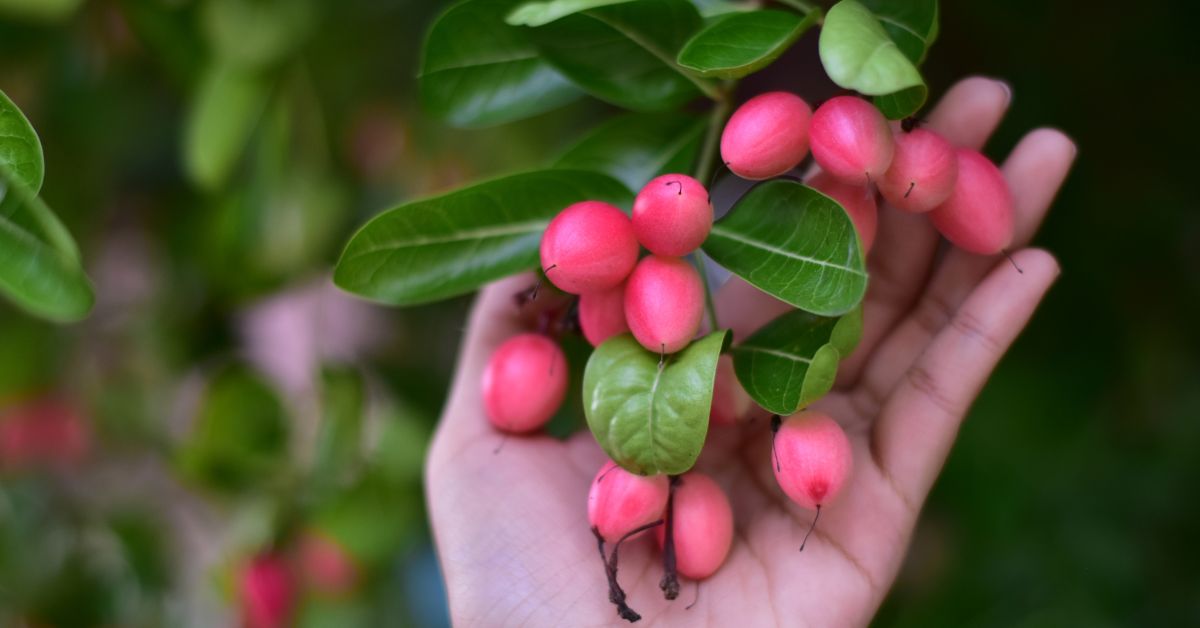Monsoon Gardening: Grow Tangy Karonda (Indian Cranberry) in 6 Easy Steps
Sunday mornings were magical for me as a child. The highlight was my baba’s (grandfather) trip to the local vegetable market. Every return brought a familiar joy I yearned for — a new batch of fresh produce.
Among the greens and potatoes in his old jhola (bag), there were the treasures I sought: karonda (Indian cranberry), small and jewel-like fruits in green and red hues.
Ignoring my amma’s (grandmother) gentle prompt to wash them first, I’d dive right in to taste the mouthwatering tartness. The karonda’s burst of flavour was pure delight — a flavour that lingered in our afternoon meals.
Amma transformed these berries into tangy chutneys. Surplus harvests were pickled, preserving the summer’s bounty to enhance meals long after the season passed.
Karonda has spread joy across the country, and the best part? It is easily grown at home.
Here’s your guide to cultivating this hardy, drought-tolerant fruit during the monsoon:
1. Choosing your propagation method
Karonda can be grown from seeds, cuttings, or air layering. During monsoon, both cuttings and air layering can be successful.
For cuttings, take semi-hardwood cuttings (about 25-30 cm long). Whereas air layering method involves inducing roots to form on a branch while it’s still attached to the parent plant. The rooted air layers are ready for transplanting after about three and a half months.
If you’re propagating from seeds, sow them in August or September for better germination and growth.
2. Preparing the soil and planting
The monsoon season is a good time for planting. Choose a spot that receives plenty of sunlight, and ensure the soil is well-drained.
 Harvest when the fruits are fully red and slightly soft to the touch.
Harvest when the fruits are fully red and slightly soft to the touch.
For potting mix, use a mix that drains well, such as a combination of garden soil, sand, and compost. If planting multiple plants, maintain a spacing of 1.5 to two metres.
3. Care during monsoon
Karonda needs minimal watering once established and is drought-tolerant. However, during heavy rainfall, good drainage is crucial to prevent waterlogging, which is detrimental to the plant.
4. Fertilisation, pruning, and mulching
Apply organic fertiliser like compost or farmyard manure during the main growing season. Prune your plant to maintain its shape and encourage new growth. Remove any dead or diseased branches.
Also, keep the area around the plants weed-free, especially during the monsoon season when weeds can thrive. You can also mulch with black polythene to help retain moisture and suppress weeds.
5. Addressing pests and diseases
Karonda plants are relatively hardy, but they can be affected by certain pests and diseases during the monsoon season. Look for black or brown lesions on the leaves and branches. It can be controlled by spraying a copper-based fungicide.
Fruit flies can also infest ripe fruits. Removing and destroying infested fruits, along with using traps and bait sprays, can help manage the infestation.
6. Harvesting
Karonda plants begin fruiting after two to three years of planting from seed. Fruits typically ripen in four to six months after flowering. Fruits ripen between July and September. Harvest when the fruits are fully red and slightly soft to the touch.
By following these straightforward steps, the monsoon will bring you the joy of your karonda harvest.
News